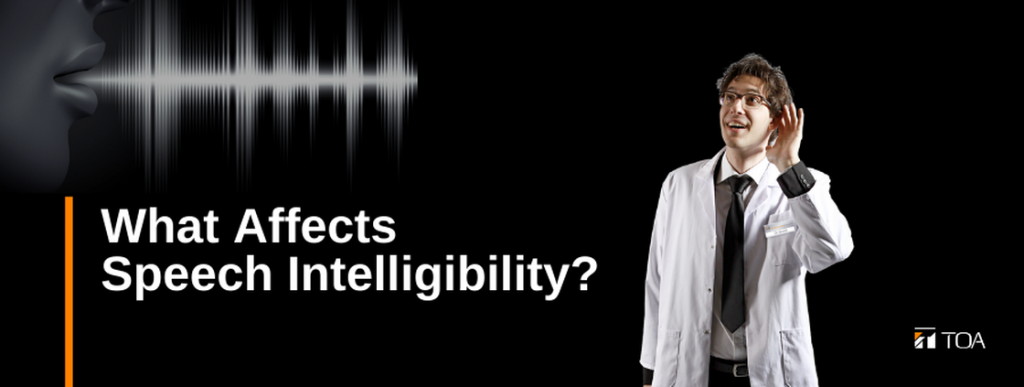What affects speech intelligibility?
Sound Talks
What affects speech intelligibility?

When listening to music from a radio or stereo system, have you ever experienced the tone changing as you move? It is because the spread of sound from a speaker differs from frequency to frequency. This is known as the Doppler effect.
High-frequency sounds from conventional speakers spread narrowly and low-frequency sounds disperse to a wider range, therefore the volume you hear in front of speakers varies from the volume that you hear standing beside or behind the speakers.
By the same token, in a conference room environment, the sound that you hear when seated below a mounted ceiling speaker will differentiate from the sound you hear when you are seated away from the speaker.
When sitting just below a ceiling speaker during a speech, the sound projected will be heard at its natural sound quality, which will ultimately accomplish loud and clear results but sometimes too loud.
On the other hand, if you were to sit in the same conference room, but away from the speaker, the sound would appear low and the high-frequency sound will attenuate.
Usually, the frequency response* needed to hear human voices clearly is between 200 Hz and 7 kHz.
The articulation of a speech, in particular, depends strongly on the clarity of consonant sounds in a high-frequency band between 2 kHz and 7 kHz.
It is, therefore, essential to spread high-frequency sounds across a conference room to ensure that the clarity of speech reaches all listeners
How to Improve Speech Intelligibility?
F-series Wide-Dispersion Ceiling Speaker (Patented) is an innovative development from TOA, which combats the issues surrounding volume and tone fluctuations. The unique speaker offers a wide dispersion of high-frequency sounds, allowing listeners to hear speech clearly from a much wider proximity. Additionally, the wide dispersion of sound through F-series speakers results in fewer speakers having to be installed.
One of the key advantages of the F-series is the remarkable speech intelligibility that the speaker provides.
The F-series allows you to hear speech and announcements clearly anywhere within a conference room and other sizeable buildings whilst reducing the number of speakers needed for installation, which proves ideal for large facilities like passages in airports.

*What is Frequency Response?
The frequency response is used to describe the range of audible frequencies that a speaker can reproduce from bass to treble tones.
Normal human hearing capabilities are from 20 Hz to 20,000 Hz. Theoretically, a speaker with a frequency response that includes this range would reproduce all the sounds a human can hear. Sounds below 20 Hz are called infra-sound, whereas those above 20,000 Hz are ultrasound. The ear can perceive neither, although infra-sound can sometimes be felt as vibrations
- Support
- Sound Talks
-
What affects speech intelligibility?